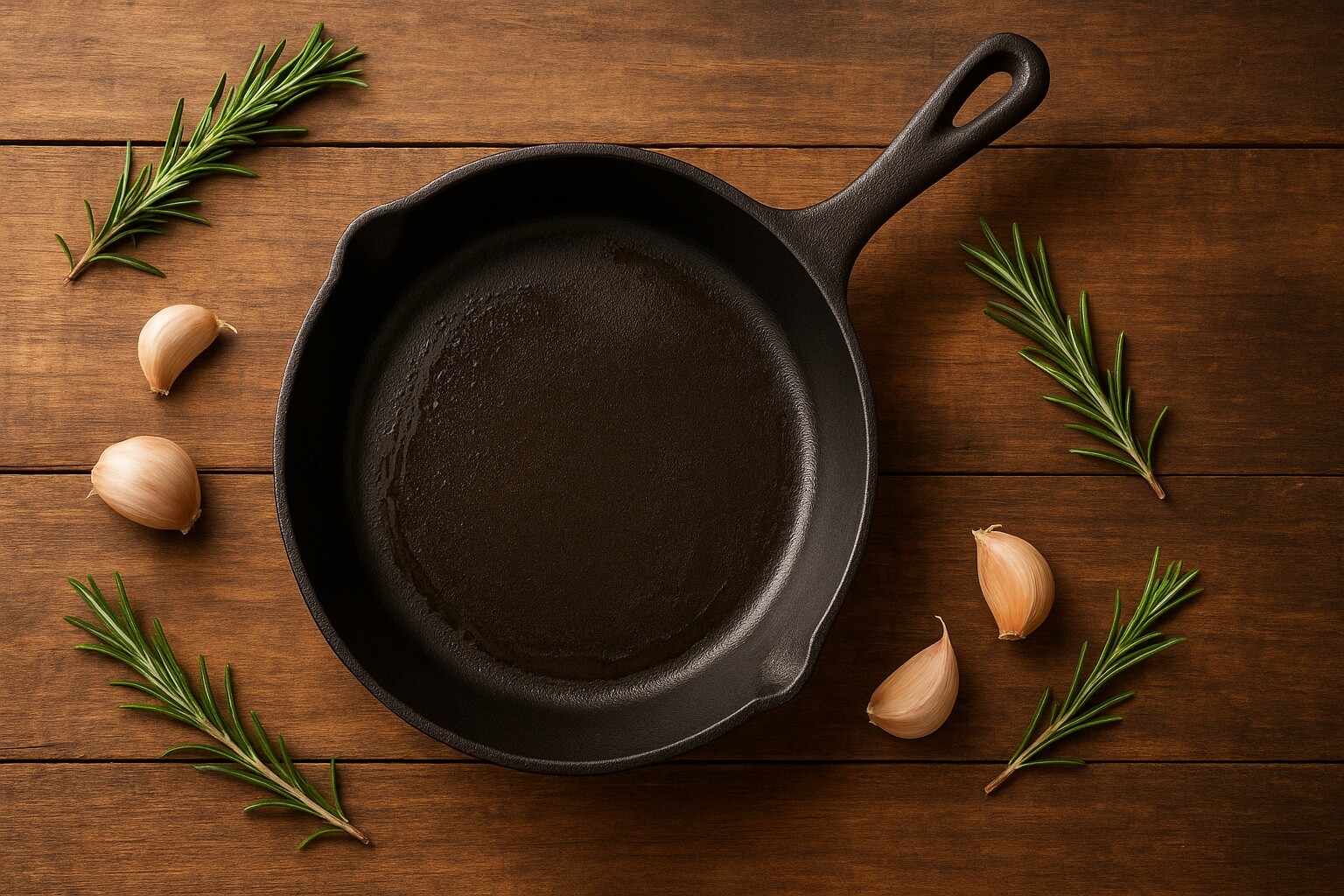Seasoning Cast Iron
Cast iron skillets have been kitchen staples for generations thanks to their durability and versatility. To keep them performing at their best, they require seasoning — a process that builds a natural non-stick surface and protects the metal from rust.

What Is Seasoning?
Seasoning is the thin layer of polymerized oil baked onto the cast iron’s surface. Over time, each use strengthens this coating, making your skillet easier to cook with and clean. Without proper seasoning, cast iron can rust, stick, and lose its cooking performance.
How to Season Your Cast Iron Skillet
Here’s a step-by-step method trusted by chefs and home cooks alike:
-
Clean the skillet Wash with warm water and a small amount of mild soap (this is one of the few times soap is okay). Dry thoroughly.
-
Apply oil Rub a thin, even layer of high smoke-point oil (like flaxseed, canola, or grapeseed) all over the skillet, inside and out.
-
Wipe off excess Use a clean cloth or paper towel to remove excess oil. The skillet should look almost dry — too much oil causes stickiness.
-
Bake Place the skillet upside down in a preheated oven at 230°C (450°F). Bake for 1 hour. Place foil on the lower rack to catch drips.
-
Cool slowly Let the skillet cool inside the oven. Repeat the process 2–3 times for a strong base seasoning.
Everyday Maintenance
- Avoid soaking in water.
- Dry thoroughly after each wash.
- Rub in a thin coat of oil after cooking and cleaning.
- Cook with it regularly — that’s the best way to keep seasoning strong.
Conclusion
A well-seasoned cast iron skillet is virtually indestructible and only gets better with time. With regular use and simple care, it can serve you for decades — and even be passed down to the next generation.